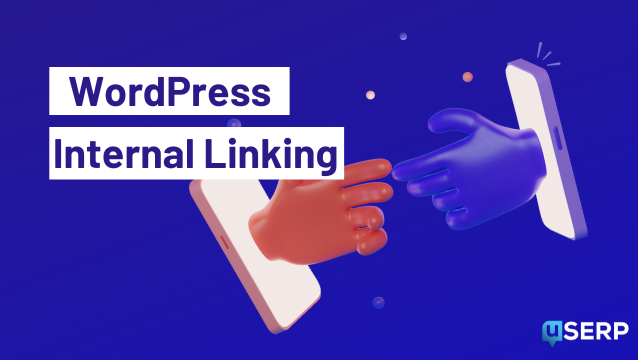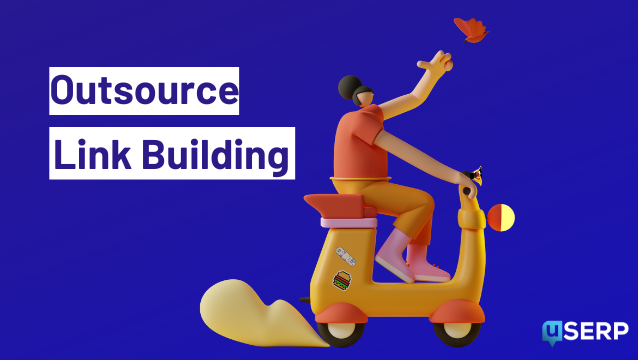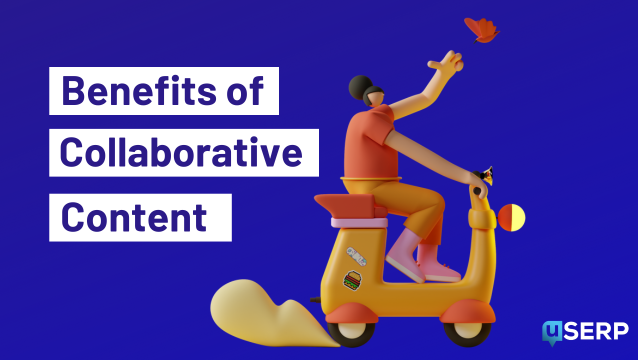An ideal digital transformation strategy goes beyond just adding new technologies. It strives for the betterment of processes and uplifting the end-user experience.
The motive to be customer-centric is one of the primary driving forces for companies to adopt digital transformation. Yet this isn’t widely practiced.
Research suggests that 41% of companies are investing in digital transformation efforts without doing their due research on their consumers. They continue to adopt outdated practices that no longer align with the digital transformation goals.
The perfect example?
Search Engine Optimization.
We know that SEO is a key component of any digital marketing strategy. But have you noticed that the conventional SEO tactics contradict the rules of digital transformation? Some brands still take shortcuts of keyword stuffing and producing content for the sake of higher ranking while the user experience takes a backseat.
This makes us question whether the age-old SEO metrics still hold the same value in times of digital transformation. All the practices that companies leveraged are being replaced due to evolving customer expectations and transformation in technologies. If your current SEO strategy is not built around these changes, you’re most likely going to face the repercussions of losing out on relevant traffic.
The fast-changing outlook is fascinating and intimidating at the same time. How do you keep up with the trends and define an SEO strategy that is in sync with your digital transformation goals?
For starters, you bring about a change in perspective.
Take a look at some of the top practices you can adopt to redefine your SEO strategy to keep up with the digital revolution.
#1 Relevance over Ranking
Put yourselves in the shoes of a search engine provider like Google. If you think about it, they have a very consistent and simple goal — To match the user queries as closely as possible. If you want to get on Google’s good side, you don’t need to strive for the top spot. You just need to adopt practices that will organically take you there.
As Google is advancing, it has stopped placing too much emphasis on keywords.
For example, Panda was the first relevance-oriented update from Google. It allowed Google to segregate low-quality pages that ranked higher on SERPs. It went a step further with the RankBrain update that leveraged AI to match the context and words in the query and rank relevant pages higher. The latest update to join the troop was BERT which focuses on showing relevant answers to billions of questions that people pose on Google.
Google has also introduced the ‘featured snippet’ format which highlights web pages that its systems determine are especially likely to contain what the browser is looking for. Check out the following example of a ‘featured snippet.’
But, why are we talking about updates?
To show how Google is taking a step forward with prioritizing relevant pages. Apart from the traditional SEO metrics, it’s assessing the context of your content and the topic authority of your page.
So what can you do to ensure relevance?
- To tackle these changes, start with drafting relevant content. Broaden your understanding of the user intent. To do so, instead of just finding out what the customers are searching for, find out the ‘why’. This will be your stepping stone in publishing and putting relevant content out there.
- Categorizing your top searched queries will significantly help you in designing your content. Are your visitors asking a question that you have the answer to? Are they looking for images for certain products or comparisons? Are they looking for reviews and recommendations?
- Google is also placing significant emphasis on links from topic-relevant sources. You also don’t need to include keywords This includes your external links, as well as backlinks. While there is no defined rule-book that says that guarantees link relevance or the number of backlinks too.
According to John Muller, the search advocate at Google, “… you could go off and create millions of links across millions of websites if you wanted to, and we could just ignore them all. Or there could be one really good link from one website out there that is, for us, a really important sign that we should treat this website as something that is relevant because it has that one link… So the total number essentially is completely irrelevant.”
The point is again not how many but how valuable. You can adopt certain practices for topically relevant links such as
- Optimize the right page for the right topic
- Using a descriptive anchor text
- Seeking relationships with authoritative websites
- Seeking links from relevant pages
- Linking on words that people are more likely to click (Avoid jargon)
- For example, if your audience is searching “what is the average HVAC technician salary?” don’t try to rank for that topic with a blog post about “HVAC Tools for Service Techs”
When you aim for relevance, you’ll realize that a successful ranking on a search engine is not supposed to be your end goal. It’s just supposed to be the beginning.
#2 Content Creation based on the Buyer Journey
As a marketer, you’d know that nobody just searches for what you sell and seamlessly flow down the sales funnel. We don’t live in a world where companies just randomly pitch products. They are doing a lot of research on who to reach out to and advertise.
Before, the SEO strategy was quite straightforward with its keyword strategy. But over time, it has become more sophisticated. You need to have a clear understanding of your customers before you build your content strategy that compliments your SEO. Who are they, what are they looking for, and what stage they are in their buyer’s journey?
Thanks to tools like CRM and marketing automation, companies have been able to categorize their buyer personas on the basis of their roles, goals, pains points, industries, etc. This ultimately helps them map out their personalization strategy for content.
You must be questioning, how does this help SEO?
Unless you don’t have a clear definition of your audience, your SEO efforts will be very misguided. Remember the relevance that we talked about? If we consider the AIDA (Awareness, Interest, Desire, Action) model, for a person at an awareness level, an action-oriented blog will be irrelevant.
To create content based on the buyer’s journey, think of the keywords, problems, and goals each persona will have at each stage.
For example, upon doing keyword research, a marketing agency can come across questions like ‘how to build a Twitter ad campaign’ or ‘tips on social media marketing.’ A prospect at the interest stage will have questions like ‘top marketing agencies in Brooklyn’, ‘best marketing agencies for small businesses, etc.
You’ll notice a keyword pattern at every stage. A person at an awareness level is more likely to pose questions and use informational keywords like ‘tips’, ‘How to’, and ‘What is.’ If you consider the above example, you can gauge that the prospect is at the interest stage. They will likely click on one of the public business review websites with strong SEO like Clutch and Yelp to check the credibility and performance of your brand from other customers. (You should definitely consider listing your product or service on such sites that are relevant for your industry).
To conduct full-fledged keyword research, you can tools like SEMrush and Ahrefs and develop a list of topics. The next time you write a content piece or publish a video, you know how to better target your audience at every step of the buying process. To evaluate which keywords generate revenue and not just leads, level up your reporting with CRM and Google Analytics integration.
You’ll need to research the buying process in detail to know what type of content is good for what stage. It will largely depend on the type of your industry and the time your consumer spends at each stage. HubSpot suggested that, in general, for b2b, blogs, how-to tutorials, social media posts, educational webinars, are all good options for your prospects on the awareness stage. For interests and desires, consider publishing content like case studies and product comparison guides. And you can offer free consultations, offers, and free trials for prospects at the last stage.
#3 Elevated CX
We’ve established before how customer experience is at the forefront of a digital transformation endeavor. But what does this customer experience mean in the context of SEO?
Customer experience starts at the very minute a prospect starts their buyer’s journey. And for most of our digitally mature audience, it will start with a search engine. This means the ball is in the SEO court to build a lasting first impression. We already discussed the relevance and personalized content which are majorly impacting the customer experience.
Some of the other top parameters you need to consider are:
Inter-Linking & Backlinking
Yes, content is great but it’s just not enough. Every marketer wants to drive organic traffic to its website. And a well-balanced linking strategy is the key to pumping up your SEO. The emphasis is on well-balanced because internal links won’t suffice. Linking your content to an authoritative website with contextual anchor text adds to your credibility and relevance too.
Optimize Page Load Time
Nothing is a big turn-off for customers than clicking on a search result and being greeted with a buffering sign. Understand that rarely do people just click on a single search result and they quickly open different SERPs on new tabs. If your page takes time to load, you can also say goodbye to your prospect as they’ve moved on. Your bounce rate shoots up and the content that you worked so hard on is lying unexplored. Ouch. Optimizing page load time can highly reduce the bounce rate.
Protip – You can check and increase Page Speed with Google PageSpeed Insights Field Data.
Mobile-optimized site
More than 60% of all Google queries are performed using mobile devices. Since the number is at a record high, you cannot ignore optimizing your SEO activities for mobile devices. The number of mobile searches has also prompted Google to include mobile-friendliness as a prominent factor for SEO. You need to ensure your site needs minimal scrolling on mobile devices, avoids flash, and loads quickly, so fewer users will have concerns about clearing the cache, updating the device, and freeing up storage. All these factors will add to the positive CX.
#4 Enhanced Integration of Channels
There has been an evident rift between Search and Paid marketing due to differences in KPIs or strategies. Companies often prioritize PPC (pay-per-click) marketing due to the instant results and gratification. There’s also been a visible disparity in the budget allocation that has often led to the search and advertising teams working separately.
Developing a collaborative organizational culture is a critical mission of digital transformation. This involves merging the strengths of two teams to achieve a common goal. When you integrate search with multi-channel marketing including mobile marketing, you’ll notice that there’s more similarity in the goals than differences. Digital transformation has allowed companies to see that and drill down to common KPIs that the two teams can work towards. The integration of channels can enhance organic traffic and better ROI for paid search. A few ways in which a search and PPC can work together are:
Better keyword Targeting: It’s a high possibility that one team is missing out on tapping keyword opportunities that can benefit other channels. There won’t be any information silos if the search team and marketing uses the same tools to check keyword performance data and keyword relevance.
Understand Keyword Intent: To optimize ad performance across channels, it’s crucial to know the click-through rate. Using the keywords targeted to develop a compelling ad copy would help you build a highly personalized and relevant ad campaign across channels and also drive organic traffic through paid search. Consider the following example of Udemy.
Better Landing Pages: An important factor that defines your quality score for AdWords is your landing page. And optimizing your landing is in the hands of SEO be it optimizing the load time or identifying duplicate content. This is another classic example of why search needs to be in tandem with advertising.
Modern SEO practices require a more holistic approach so that the advertising efforts are visible across channels.
#5 Higher Level of Control
SEO isn’t just about letting Google dictate your company’s fate anymore. Yes, search engines like Google have a lot of authority and control over page rankings. But like we’ve talked about before, it also considers the organic efforts that a brand undertakes.
Because of digital disruption, companies can now have greater control over these organic efforts. You can have a lot of say over who sees certain pages and when thanks to the various digital tools at your disposal. For example:
- You can analyze SEO trends through Google Search Console
- You can track keyword progress using Ahrefs and Google keyword planner
- You can effectively distribute your content using tools like Hootsuite, and Buffer
- You can improve backlinking strategies using Ubsersuggest and Monitor Backlinks
Modern SEO practices are all about allowing your brand to interact with its target audience on a personal level. It means to achieve scalability and, at the same time, ensure personalized search results for different customer segments. Merging digital automation tools with SEO can give you much-needed control in dictating your SERPs and further help you achieve your search goals.
Wrapping Up
If you understand and follow these practices you’re most likely to ace your SEO game even in times of continuous digital evolution. Since digital transformation is driven by the customer, you need to get your SEO strategy on the same track. Both SEO and digital transformation provide long-term benefits to your business. So if you get both right, imagine the wonders it can do for your brand awareness and business growth.
- How to Redefine SEO in the Age of Digital Transformation - March 10, 2022









